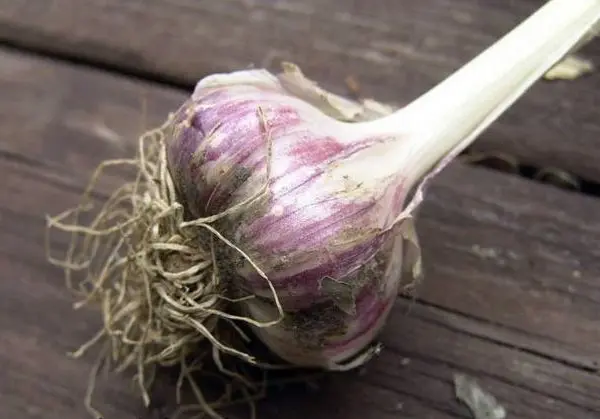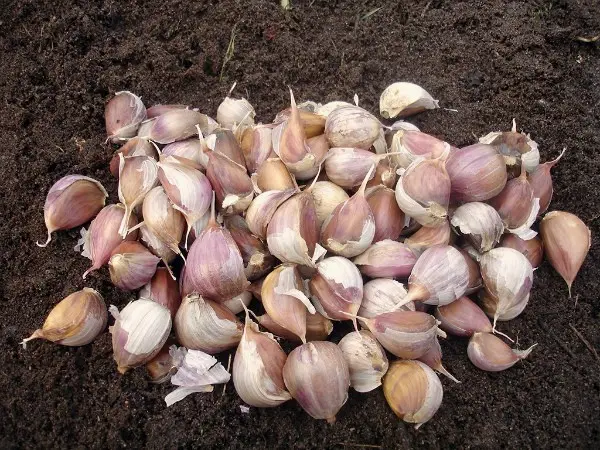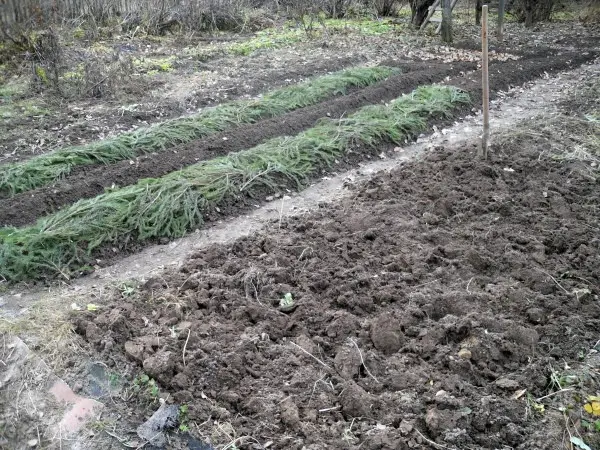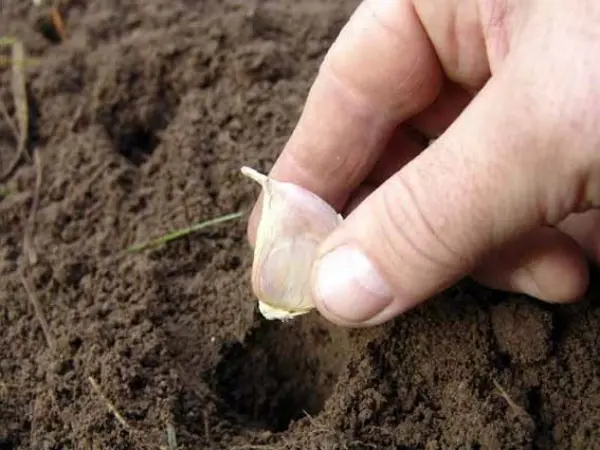Contents
Garlic is not just a good seasoning for any dish and an indispensable touch in delicious pickles. It is also a proven folk remedy that strengthens the immune system and helps to cope with all sorts of unpleasant diseases, from the common cold to bronchitis. Therefore, the cultivation of garlic, especially in the cold Siberian regions, is an extremely popular activity among gardeners. But in order for the idea to take place, and the harvest to be rich, you need to figure out how and when to plant garlic for the winter. It is this question that we will consider in the article, and we will also help you deal with the technology of planting this crop in Siberia.
The best varieties of garlic for Siberia
Siberian temperatures are quite severe, so it is quite important to understand the varieties of winter garlic before you start planting.
It is worth remembering how winter varieties differ from spring varieties and not to be confused: summer crops can hardly withstand frosts, while winter crops can easily wait out the cold in winter under a snow cap. Next, consider the most popular varieties of winter garlic.

Gribovsky Yubileiny is an arrowy mid-season variety of culture. The head of garlic usually weighs up to 45 grams and holds up to 10 cloves covered with creamy scales with purple streaks. The sharpness of this variety is not very pronounced. While Gribovsky 60 is also a shooter variety, but early ripening, very sharp. Its bulb is larger, often reaches 60 grams and consists of large cloves from 5 to 12 in the bulb.
Elenovsky is also an arrowy, very fertile variety, characterized by a high yield and increased frost resistance, as well as resistance to bacterial diseases. In white bulbs (about 50 g) there are only 4-7 teeth. The Spas variety is characterized by the same stability and fertility. Its bulbs are twice as large as Elenovsky (up to 100 g), but there are also few cloves in it – from 7 to 10 pieces per bulb. There is another variety – Sofievsky. He, like Spas, is resistant to frost and nematodes. Its head weighs 120 grams on average and produces about 8 teeth.
Alcor is a mid-season variety that produces small bulbs covered with purple scales. Garlic heads weigh up to 40 grams, each of them has up to 6 cloves. One of the most popular varieties is Lyubasha. It produces large heads up to 130 g in weight with large teeth from 4 to 7 in one bulb.

Features of planting winter garlic
Before planting garlic for the winter in Siberia, you need to decide what kind of result you want to achieve: to harvest a large crop or breed a good variety. If the former, then your seed will be the teeth. If the second – then the bulbs.
It is important to understand how one differs from the other. The cloves are the “fruits” of garlic, closely adjacent to the stem in the bulb in winter varieties. Bulbs are, relatively speaking, “seeds” that ripen in a seed box on the arrow. In the first year after sowing, the bulbs give bulbs with one clove (the so-called sevok), which will grow into a full-fledged bulb only the next year. Such a plant is grown in two seasons, but it guarantees a high-quality and rich harvest.
When the decision is made, it is worth taking up the selection of seed and its preparation. Garlic cloves for planting are selected large and intact. This will be the key to good, proper growth. Such teeth must be hardened – soaked in a solution of potassium permanganate, an ash solution or a solution of copper sulphate.

Bulbs also need to be dried and treated with a strong solution of potassium permanganate or an ash solution by spraying immediately before planting.
Deadlines
Winter garlic in Siberia should be planted when you have completely cleared the selected piece of land from the previous crop and prepared the ground. All this should take place in late September or early October, about 50 days before frost. During this time, the clove placed in the ground will have time to develop a good root system and begin its proper development. So the plant adapts as much as possible and will be ready to wait out the winter.
Site Selection
Landing place is also an important issue. It is important to take into account many points when choosing the right site for sowing garlic. It is worth remembering that the culture loves loamy soil with low acidity. The earth should not accumulate a lot of moisture – this harms the development of planted teeth, moreover, it can lead to an undesirable result: garlic can simply rot.

Determine the place in advance, even before the harvest of predecessors. Remember that the type of plants that grew on the site before will also depend on how well the new soil will take root in the culture. By the way, it is not recommended to plant a plant in the same area twice in a row, as the previous sowing will take too many nutrients and the new crop will turn out to be rather meager.
When you have decided on the land plot and removed all organic residues from the soil, you need to proceed to the soil fertilization stage.
Proper soil saturation will help garlic survive the winter, even in Siberia.
The land is best fertilized with mullein or horse manure, nourished with phosphates and potassium. Fertilizer should be applied to the ground at 20 cm – the maximum depth of the garlic root system. It is also recommended to treat the soil with a solution of copper sulfate.
After the land has been cultivated, you should hold it for some time under polyethylene or roofing felt. The soil needs to warm up and accumulate moisture. However, the shelter must be removed for the winter so that the garlic in the ground does not rot.

Landing technology
Before planting, after the cover is removed from the ground, the soil should be slightly damp. Now that everything is ready, you can proceed directly to the landing. There are several options for planting garlic, and the choice of the actual one depends on the size of the land allotted for planting:
- The earth can be fed with a solution of yeast, after which the furrows can be divided, leaving 25 centimeters between them. In these furrows, cloves are planted at intervals of 10 centimeters, and then covered with earth.
- If you want to grow as much garlic as possible in a small area, you can plant the crop in two tiers. The technology is similar: you need to dig furrows up to 20 cm deep, lay the first tier of teeth. Then cover with earth for 5-6 centimeters, plant the second tier and dig in again.
- The third way for those who do not want to dig and mark furrows once again is to take care of their depth. In this case, the beds are simply distributed at a distance of 25 cm from each other, garlic cloves are sown and covered with earth.
It should be remembered that in all cases, after planting, it is recommended to mulch the crop with leaves or grass.

precursors of garlic
Returning to the question of predecessors, it is worth clarifying a few important details. It is best to know after which crops the sowing of garlic will give a rich harvest, and after which – a meager one. Of course, the first rule that is easy to follow (if we are talking about winter varieties) is not to plant a crop twice in a row.
However, it is unlikely that gardeners will let the site stand idle in the summer. Because you will definitely sow something. And here it is important to think about what exactly. After potatoes, Jerusalem artichoke, rare and carrots, garlic cloves will not develop very well – there will be too few useful elements in the ground. But after melons, cabbage and legumes, the earth, on the contrary, will be saturated with useful nutrients for the growth of garlic.
Video “Two ways to plant winter garlic”
This video describes the unique experience of a Siberian gardener who manages to grow winter garlic on heavy loamy soil.









